Read this post on TravelFeed.io for the best experience
.png)
The temple of Jogyesa had considerably changed since the first time I had visited it, which was surprising given the fact it had only been two years since then. I could tell by looking at the striking number of paper lanterns that were now hanging on all parts of the temple. At first glance, it seemed the lanterns covered every nook and cranny of the temple, hanging on wires from the ceiling, displayed on the sides, hanging from the pillars of the various buildings within the compound. Some of them were plain white, others were a bit more colorful, while others were shaped like lotus flowers or even adorned with traditional drawings, from dragons to monks.
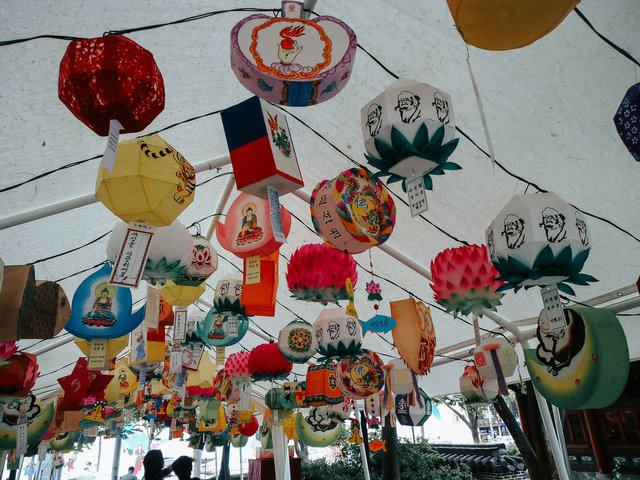
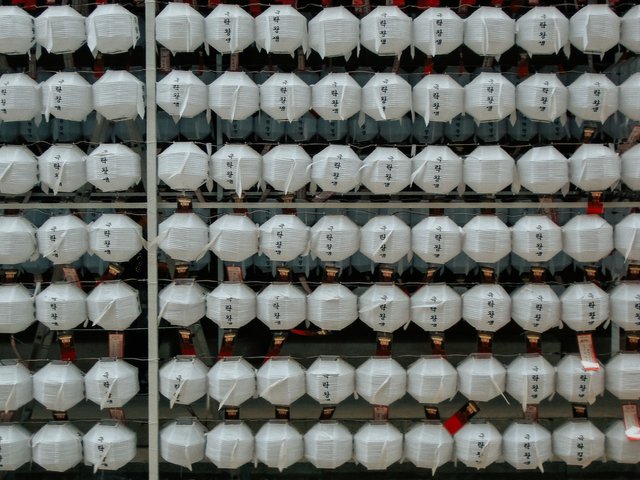
As I walked within the temple, the crowds got much thicker than the first time I had visited too and I realized there was a long line of people, most probably pilgrims, queuing before a tiny statue of the Buddha. The Buddha statue was standing on a platform covered in flowers, under a rainbow of paper lanterns and next to it was a woman wearing a traditional hanbok dress, watching over the pilgrims that took turns to pour holy water on the statue. Some of them had brought their own paper lanterns, waiting to hang them somewhere on the premises, which was an arduous task if any since there wasn’t much room left.
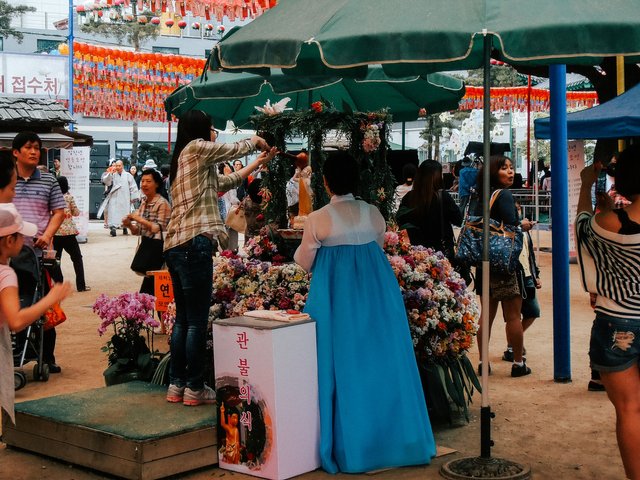
I still had no idea what was going on but a few clues led me on the right track. First, a lot of lanterns bore drawings of the Buddha. Second, many of the lanterns bore an inscription saying “Bucheonim osin nal”, which meant “the day when the Buddha came”. In the end, I didn’t need to be Sherlock Holmes to put two and two together and understand that my visit had coincided with a cultural event known as the Buddha’s birthday, which was celebrated every year on the eighth day of the fourth month of the lunar calendar, in May or April depending on the year.
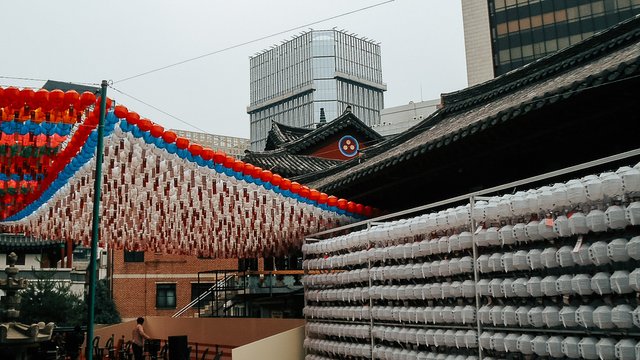
Buddha’s birthday, I learned, was a widely observed spiritual event as well as a public holiday. It was a time for celebration and prayers throughout Korea, leading locals to flock the temples and adorn them with beautiful lanterns and colorful sculptures made of paper. Most of the festivities surrounding the birthday began a week before the date with temples holding special cultural events such as Korean games, dance or mask performances. A parade was even held on the day of the birthday, illuminating the streets of the country’s biggest cities such as Seoul and Busan with impressive lantern displays.
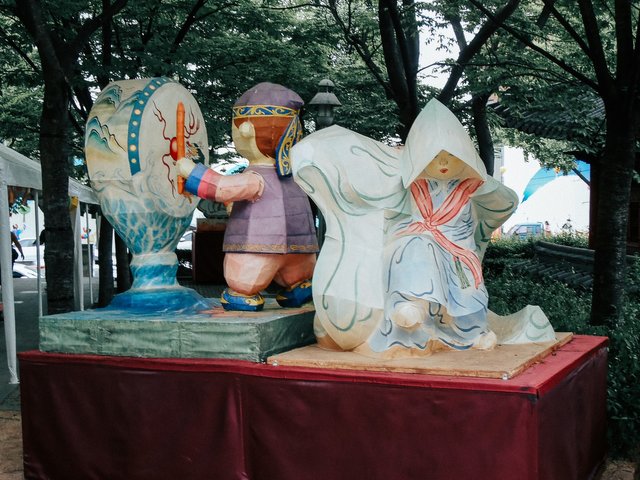
Unfortunately, my stay in the country didn’t match with the day of the lantern parade. Luckily enough though, the hanging of the lanterns could start as early as a month prior to the actual birthday and could last for several weeks afterwards. I suspected the structures were too beautiful to take down so easily but whatever the reason was, I considered myself lucky to enjoy the temple of Jogyesa in its most vibrant aspect, embellished by beautiful lanterns symbolizing the Buddha’s wisdom and compassion and energized by the faith of its visitors.
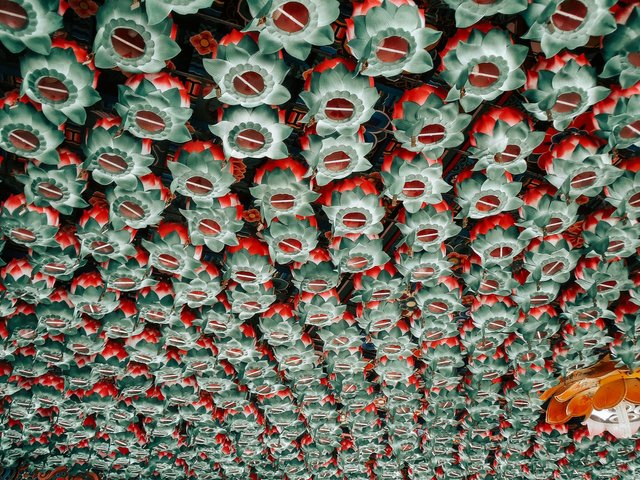
However, Jogyesa wasn’t the only temple to be enhanced by the festivities and another prominent temple in the city was said to be a sight to see during this time. It took a bit longer to get there, as the Bongeunsa temple was located on the southern bank of the city, within the infamous district of Gangnam-gu. Part of Jogyesa’s charm was its location within the city’s central area, next to the palace of Gyeongbuk, a place known for its cultural significance. When it came to Bongeunsa though, I couldn’t really fathom a place of spiritual significance and soothing atmosphere when I got there. First of all, Gangnam and spirituality didn’t really mix well in my mind but beyond that somewhat petty prejudice, it turned out the temple was standing right in front of a huge shopping mall known as the Coex and was surrounded by glass office buildings.
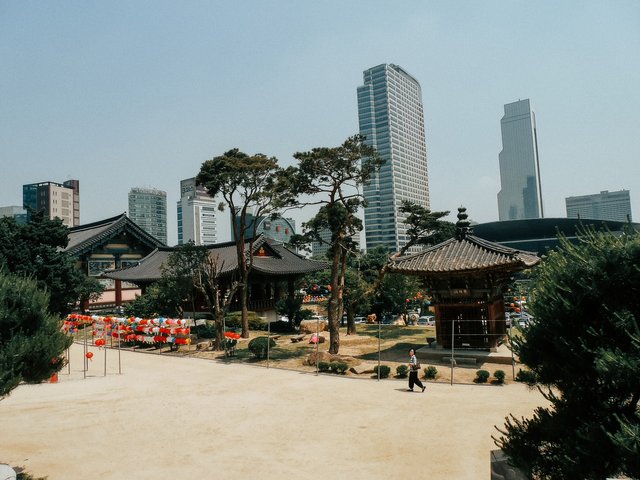
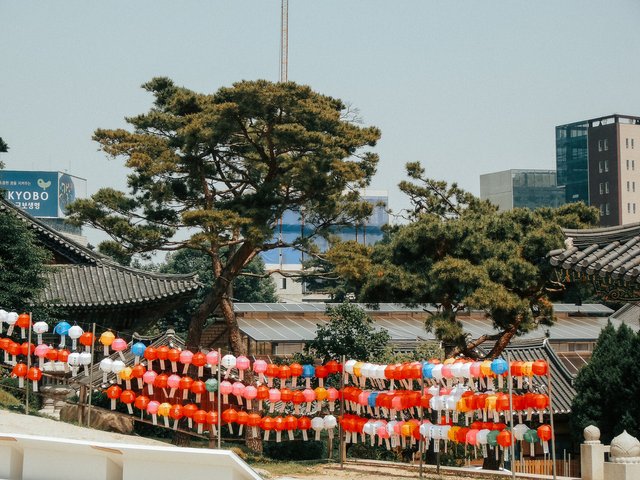
It was odd then that the surroundings seemed to vanish as soon as I stepped inside the temple. Even traffic noise seemed somehow muffled. The temple covered quite a lot of ground indeed, comprising many different buildings scattered on the slope of the Sudo Mountain. There was a feeling of space as well as a feeling of peace within it and it felt a bit more organic too, due to the numerous pine trees that surrounded the wooden buildings, all adorned with bright traditional paintings and colorful lanterns, obviously. It was therefore easier to get away from the crowds compared to Jogyesa, which was much more packed on every corner.

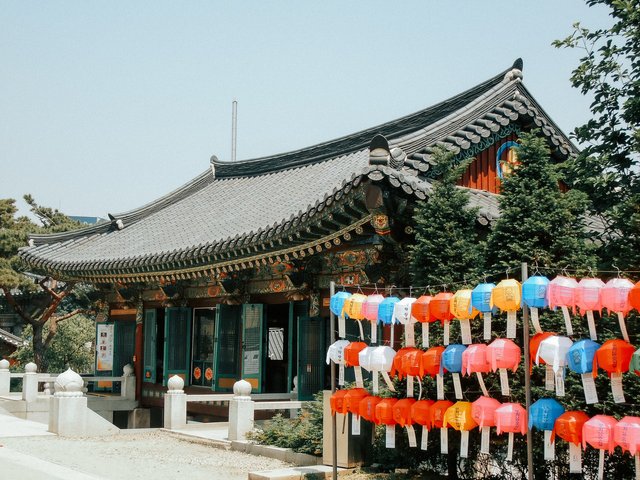
In Bongeunsa, people came to pray, to pay homage to a huge statue of the Buddha or simply to sit down on a cushion and have a chat. Some of them also came to hang their lanterns, which were beautifully displayed along the temple’s entrance way and in its main hall. As for me, I was most impressed by the massive paper decorations hung within the temple’s drum hall, bringing to life magical creatures from the Korean folklore.
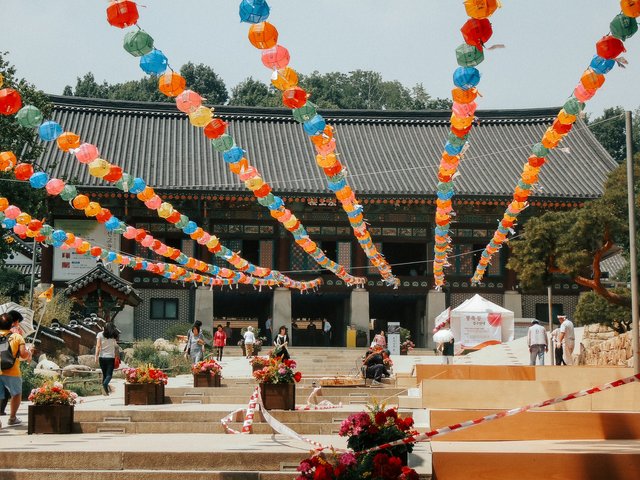
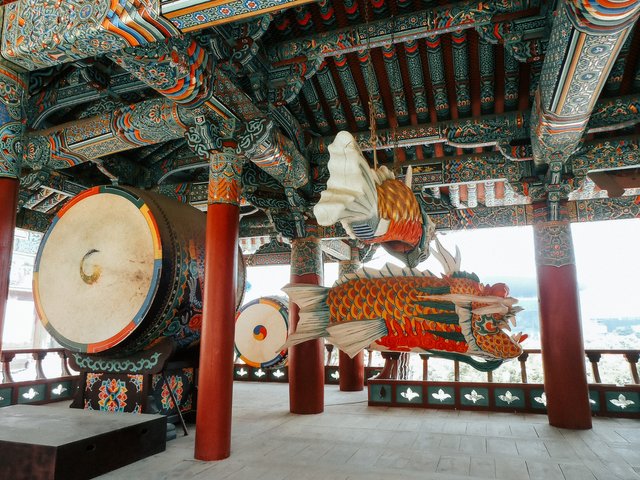
Despite its modern surroundings, the Bongeunsa temple turned out to be a peaceful haven that seemed miles away from the city even if it stood right in the middle of the hustle and bustle. As a result, it was also natural that it was favored as a temple stay by many tourists from overseas or that it offered traditional tea ceremonies.

When I left Korea a few days later, I couldn’t help but regret missing out on the lantern parade on the day of the Buddha’s birthday. Yet, I had chosen the dates of my visit at random and couldn’t be lucky enough to have been able to take part in the festivities somehow. I also brought back a lotus-shaped lantern of my own in my luggage, which was no small feat considering my lack of manual skills, until I could come back one day and hang it in Jogyesa or Bongeunsa.
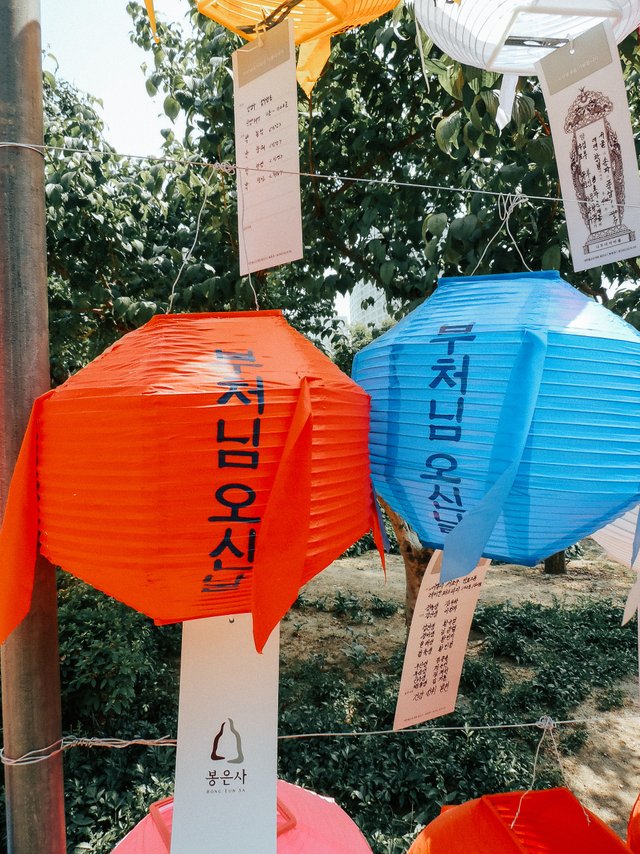
View this post on TravelFeed for the best experience.
Congratulations @haydae! You received the biggest smile and some love from TravelFeed! Keep up the amazing blog. 😍 Your post was also chosen as top pick of the day and is now featured on the TravelFeed.io front page.
Thanks for using TravelFeed!
@elsaenroute (TravelFeed team)
PS: TravelFeed is in social media to reach out more people, follow us on Facebook, Instagram, and Twitter.
Downvoting a post can decrease pending rewards and make it less visible. Common reasons:
Submit